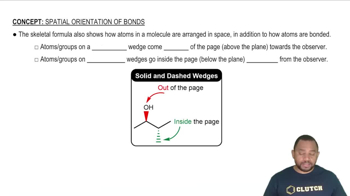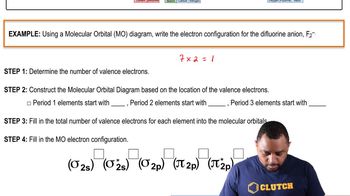Here are the essential concepts you must grasp in order to answer the question correctly.
Molecular Orbitals (MOs)
Molecular orbitals are formed by the combination of atomic orbitals when atoms bond together. They can be classified as bonding or antibonding. Bonding MOs are lower in energy and result from the constructive interference of atomic orbitals, leading to increased electron density between the nuclei, which stabilizes the molecule. Antibonding MOs, on the other hand, arise from destructive interference and have higher energy, resulting in decreased electron density between the nuclei.
Recommended video:
Spatial Distribution of Electrons
The spatial distribution of electrons in molecular orbitals refers to how electron density is arranged in relation to the nuclei of the bonded atoms. In bonding MOs, electron density is concentrated in the region between the nuclei, promoting attraction and stability. Conversely, in antibonding MOs, electron density is found outside the internuclear region, which can lead to repulsion between the nuclei and destabilization of the molecule.
Recommended video:
Spatial Orientation of Bonds
Energy Levels of MOs
The energy levels of molecular orbitals play a crucial role in determining the stability of a molecule. Bonding MOs are lower in energy compared to the original atomic orbitals, making them favorable for electron occupancy. Antibonding MOs, being higher in energy, are less stable and can destabilize a molecule if occupied by electrons. The filling of these orbitals according to the Aufbau principle influences the overall bond order and stability of the molecule.
Recommended video:
Homonuclear Diatomic Molecules MO Diagram Example
 McMurry 8th Edition
McMurry 8th Edition Ch.8 - Covalent Compounds: Bonding Theories and Molecular Structure
Ch.8 - Covalent Compounds: Bonding Theories and Molecular Structure Problem 96
Problem 96 Verified step by step guidance
Verified step by step guidance


